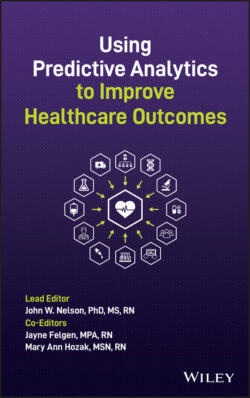Читать книгу Using Predictive Analytics to Improve Healthcare Outcomes - Группа авторов - Страница 36
Implications for the Future
ОглавлениеReaders of this chapter are likely to relate to at least one of the 16 steps identified: administrators understand the outcomes; nurses understand the hunches; theorists understand the use of formal and informal theory; analysts understand the math; engineers, data scientists, programmers, and informaticists understand the movement from manual to automated data collection and reporting; and some of these people understand many or all of these 16 steps. Much of the guesswork is eliminated as hunches are tested mathematically before they are tested in practice. When healthcare organizations start using predictive analytics to improve outcomes, a big change happens in the care environment as better informed choices are made in how care is provided. Using the 16 steps described in this chapter will enable people in healthcare to move beyond managing negative clinical, financial, or operational outcomes, into a new paradigm of providing care. This move from reactive to proactive management of outcomes puts organizations light‐years ahead of where they would otherwise be, while engaging teams in ways few of us have ever seen before.
When healthcare organizations start using predictive analytics to improve outcomes, a big change happens in the care environment as better informed choices are made in how care is provided.
